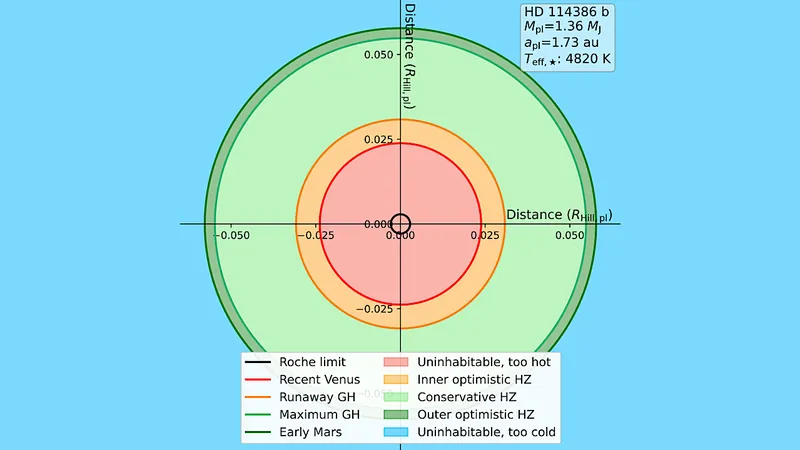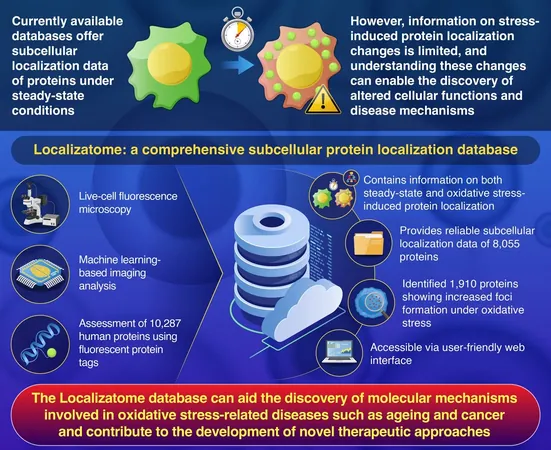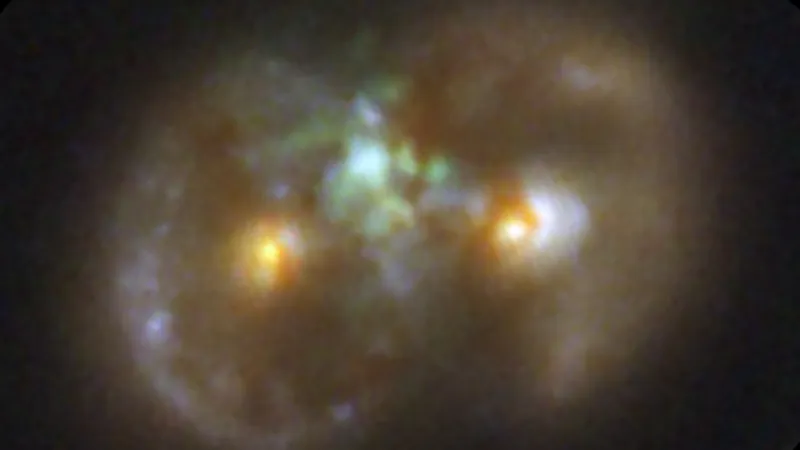
Unlocking the Secrets of Habitable Moons Around Giant Planets
2025-05-27
Author: Yu
The Search for New Frontiers in Habitability
As we venture deeper into the cosmos, thousands of exoplanets have been identified, many nestled within the habitable zones of their stars. However, a large portion of these planets are gas giants, devoid of solid surfaces and essential water reservoirs. Could the key to life as we know it lie within their moons?
A New Hope: The Moons of Gas Giants
Currently, no exomoons have been confirmed, but promising candidates are emerging. Scientists believe that the formation of moons is an inherent process in planetary systems. This opens exciting possibilities for studying moon formation around giant planets, particularly in the final stages of planet creation. Researchers are diving into the circumplanetary disks surrounding these giants to discover conditions ripe for moon formation and to determine if these moons could host life.
Moon Formation: A Complex Process
Using advanced numerical simulations, researchers have explored how moon embryos, created through collisions with tiny celestial bodies, might evolve in circumplanetary disks abundantly filled with both embryos and satellites. The focal point of these studies revolves around a fictional 10 Jupiter-mass planet orbiting a solar-like star, at distances ranging from 1 to 5 astronomical units (AU).
Assessing Habitable Potential
To evaluate the potential for habitability on these synthetic moons, scientists have calculated stellar irradiation and tidal heating based on diverse orbital and physical traits. Interestingly, moons closer to their host planets exhibit greater mass potential, but challenges arise as many moons succumb to gravitational forces—effectively being stolen by their stars—a phenomenon more prevalent in the inner regions of their orbits.
Stunning Findings: Habitable Moons Are Possible!
Fascinating results emerged from this research, indicating that about 32% of tested synthetic moons could find themselves within the circumstellar habitable zone, a region where life has the potential to thrive. The study also revealed that while tidal heating can facilitate habitability at 2 AU, the likelihood decreases dramatically at distances beyond 5 AU, plunging to a mere 1%. This suggests that moons orbiting giant planets may serve as potential havens for life.
Visualizing the Future of Habitable Moons
The research further illustrated the varying stellar warmth across different exoplanet orbits, highlighting which planets can support habitable moons. Colors representing various temperature zones depict whether potential moons can sustain life or if they remain forever out of reach for habitation. Notably, this groundbreaking data not only contributes to our understanding of habitability but also showcases the innovative methods being deployed in the ongoing quest to explore the universe.
As we continue to unravel the intricacies of our universe, the possibility of habitable moons around gas giants shines as a beacon of hope, encouraging further exploration into these alien worlds.




 Brasil (PT)
Brasil (PT)
 Canada (EN)
Canada (EN)
 Chile (ES)
Chile (ES)
 Česko (CS)
Česko (CS)
 대한민국 (KO)
대한민국 (KO)
 España (ES)
España (ES)
 France (FR)
France (FR)
 Hong Kong (EN)
Hong Kong (EN)
 Italia (IT)
Italia (IT)
 日本 (JA)
日本 (JA)
 Magyarország (HU)
Magyarország (HU)
 Norge (NO)
Norge (NO)
 Polska (PL)
Polska (PL)
 Schweiz (DE)
Schweiz (DE)
 Singapore (EN)
Singapore (EN)
 Sverige (SV)
Sverige (SV)
 Suomi (FI)
Suomi (FI)
 Türkiye (TR)
Türkiye (TR)
 الإمارات العربية المتحدة (AR)
الإمارات العربية المتحدة (AR)